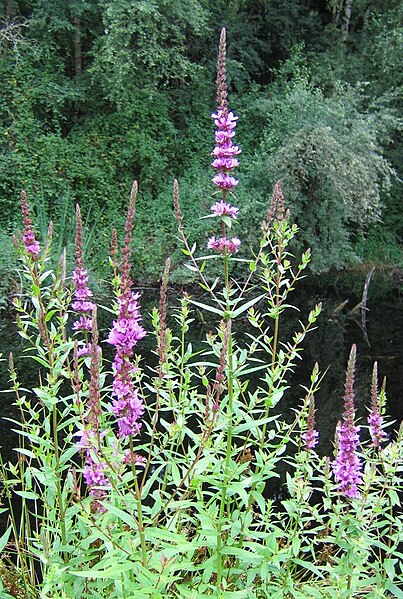 In 1988 a small crab showed up on the New Jersey shore, apparently discharged there along with bilge water from ships that had visited the Western Pacific. Deceptively innocuous, by the mid 1990’s the Asian shore crab (Hemigrapsus sanguineus) was the dominant inter-tidal crab in an area stretching from Maine to North Carolina. In the space of 3-5 years, it became the most common crab at several estuaries that I visit…at one, hermit crabs and sand shrimp have virtually disappeared.
In 1988 a small crab showed up on the New Jersey shore, apparently discharged there along with bilge water from ships that had visited the Western Pacific. Deceptively innocuous, by the mid 1990’s the Asian shore crab (Hemigrapsus sanguineus) was the dominant inter-tidal crab in an area stretching from Maine to North Carolina. In the space of 3-5 years, it became the most common crab at several estuaries that I visit…at one, hermit crabs and sand shrimp have virtually disappeared.
Asian shore crabs seem to co-exist more peaceably with one another than do native species…those pictured here were found under a single small rock. I wonder if, in contrast to other crabs, newly-molted individuals are not attacked by neighbors.
Making the Most of an Invader
There is, however, a silver lining to this environmental cloud…the crabs make a nutritious addition to the diets of many aquarium fishes and invertebrates. Many fishes consume small crabs whole, and they can be broken up for smaller fishes. Freshwater fishes ranging in size from guppies to peacock bass will enjoy an occasional crab meal as well.
Shore crabs thrive for weeks in damp seaweed under refrigeration and can be frozen for future use.
Collecting Crabs and other Marine Animals
 Asian shore crabs inhabit tide-pools, jetties and salt marshes. They forage as the tide recedes and are most easily collected at low tide, when they shelter below rocks and other cover. A wide variety of sizes (please see photo), suitable for nearly any size aquatic pet, can be gathered in no time at all.
Asian shore crabs inhabit tide-pools, jetties and salt marshes. They forage as the tide recedes and are most easily collected at low tide, when they shelter below rocks and other cover. A wide variety of sizes (please see photo), suitable for nearly any size aquatic pet, can be gathered in no time at all.
While searching for shore crabs, keep your eyes open for shrimps, worms, mussels and other small creatures. All are useful aquarium foods, and many make very interesting display animals (shore crabs are unprotected, but check local regulations regarding others).
An Unusual Visitor from the South
Seining and setting out minnow traps will improve your catch, and the sea never fails to provide wonderful surprises. Last summer an inshore lizardfish (Synodus foetens) showed up in my net (please see photo). I’ve had only limited success with them in captivity and so released this one after taking some photos.
Shore Crabs in the Aquarium
As is my way, I tried my hand at keeping Asian shore crabs in captivity, and was pleasantly surprised. Although in nature foraging is tied to the tidal cycle, captives abandon this strategy and soon appear at all hours (in contrast, native fiddler crabs that I have kept became active according to an internal clock – feeding and retiring in groups, despite the absence of a tidal influence). Shore crabs feed ravenously on any and all plant or animal based fish foods.
I set up a group in a large estuary exhibit at the Brooklyn Children’s Museum, and they have done quite well there. The crabs forage underwater and on rocks protruding above the surface, and co-exist with sand shrimp, striped killifish and other natives (in a small aquarium, they should be monitored closely for aggression).
Crab Alternatives
Please check out our extensive selection of frozen and freeze-dried fish foods. Many contain whole marine animals, and are an excellent addition to the diets of aquarium fishes and invertebrates.
Further Reading
Information about this and other introduced marine animals and plants is posted at http://www.seagrant.uconn.edu/INVID.HTM.
Please write in with your questions and comments. Thanks, until next time, Frank Indiviglio.
 That Fish Blog – Aquarium Advice and Information
That Fish Blog – Aquarium Advice and Information

